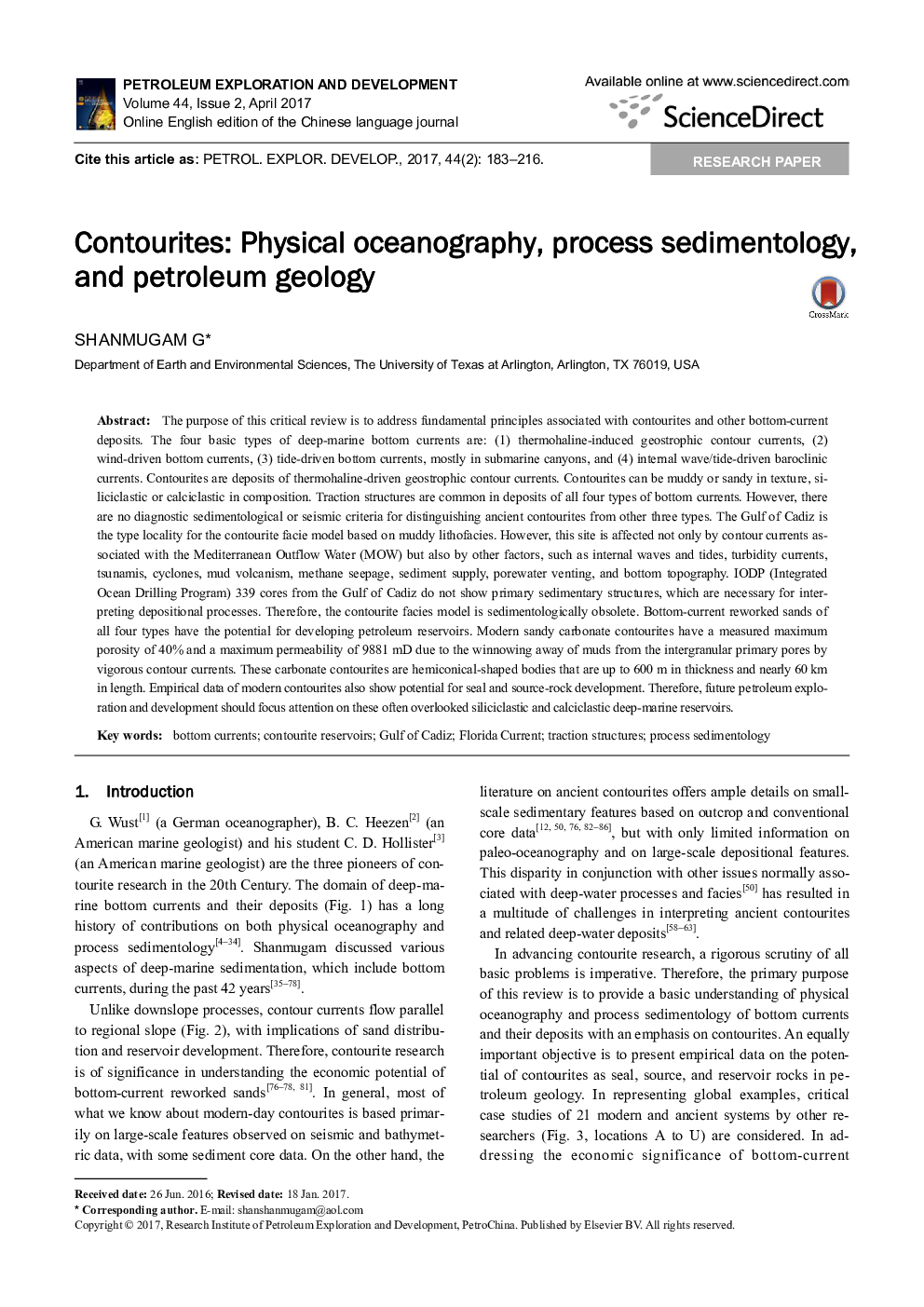| کد مقاله | کد نشریه | سال انتشار | مقاله انگلیسی | نسخه تمام متن |
|---|---|---|---|---|
| 8912269 | 1639328 | 2017 | 34 صفحه PDF | دانلود رایگان |
عنوان انگلیسی مقاله ISI
Contourites: Physical oceanography, process sedimentology, and petroleum geology
دانلود مقاله + سفارش ترجمه
دانلود مقاله ISI انگلیسی
رایگان برای ایرانیان
موضوعات مرتبط
مهندسی و علوم پایه
علوم زمین و سیارات
ژئوشیمی و پترولوژی
پیش نمایش صفحه اول مقاله

چکیده انگلیسی
The purpose of this critical review is to address fundamental principles associated with contourites and other bottom-current deposits. The four basic types of deep-marine bottom currents are: (1) thermohaline-induced geostrophic contour currents, (2) wind-driven bottom currents, (3) tide-driven bottom currents, mostly in submarine canyons, and (4) internal wave/tide-driven baroclinic currents. Contourites are deposits of thermohaline-driven geostrophic contour currents. Contourites can be muddy or sandy in texture, siliciclastic or calciclastic in composition. Traction structures are common in deposits of all four types of bottom currents. However, there are no diagnostic sedimentological or seismic criteria for distinguishing ancient contourites from other three types. The Gulf of Cadiz is the type locality for the contourite facie model based on muddy lithofacies. However, this site is affected not only by contour currents associated with the Mediterranean Outflow Water (MOW) but also by other factors, such as internal waves and tides, turbidity currents, tsunamis, cyclones, mud volcanism, methane seepage, sediment supply, porewater venting, and bottom topography. IODP (Integrated Ocean Drilling Program) 339 cores from the Gulf of Cadiz do not show primary sedimentary structures, which are necessary for interpreting depositional processes. Therefore, the contourite facies model is sedimentologically obsolete. Bottom-current reworked sands of all four types have the potential for developing petroleum reservoirs. Modern sandy carbonate contourites have a measured maximum porosity of 40% and a maximum permeability of 9881 mD due to the winnowing away of muds from the intergranular primary pores by vigorous contour currents. These carbonate contourites are hemiconical-shaped bodies that are up to 600 m in thickness and nearly 60 km in length. Empirical data of modern contourites also show potential for seal and source-rock development. Therefore, future petroleum exploration and development should focus attention on these often overlooked siliciclastic and calciclastic deep-marine reservoirs.
ناشر
Database: Elsevier - ScienceDirect (ساینس دایرکت)
Journal: Petroleum Exploration and Development - Volume 44, Issue 2, April 2017, Pages 183-216
Journal: Petroleum Exploration and Development - Volume 44, Issue 2, April 2017, Pages 183-216
نویسندگان
G SHANMUGAM,